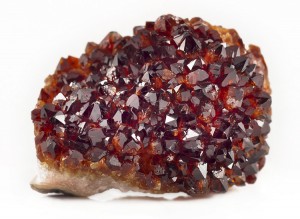January’s Garnet
January 4, 2019
Is your birthday in January? If it is, do you know your birthstone—the gem associated with the month of your birth? For January, it is the garnet, a reddish-brown gem that is part of a group of hard, glassy minerals. Garnets were one of the most popular decorative gems of ancient Rome, and were often inlaid in gold bracelets, earrings, and other ornamental items.

January’s birthstone is the garnet, a hard, glassy mineral that is sometimes used in making jewelry. Credit: © Luca 85/Shutterstock
According to tradition, a birthstone brings good luck to a person born in its month. Each birthstone also corresponds to a sign of the zodiac. The belief in birthstones may have come from a Bible story about Aaron, the first high priest of the Israelites. The story describes Aaron’s breastplate, which was decorated with 12 precious stones. Early writers linked these stones with the 12 months of the year and the 12 signs of the zodiac. The custom of wearing a stone that represented a person’s zodiac sign probably originated in Germany or Poland in the 1700′s.
Garnets include six major types of silicate minerals: almandine, andradite, grossularite, pyrope, spessartite, and uvarovite. Garnets are composed of silica and such elements as aluminum, calcium, iron, magnesium, and manganese. They range in color from red, brown, and black to various shades of yellow and green. Crystals of garnet are found in all types of rock, but chiefly in metamorphic varieties.
Some garnet crystals are used in making jewelry. Red garnet, a gem-quality garnet, commonly includes a mixture of almandine and pyrope. Garnets are also used as abrasives for grinding and polishing. Garnets are found throughout the world. Those of gem quality are mined chiefly in central Europe, Russia, and South Africa.


